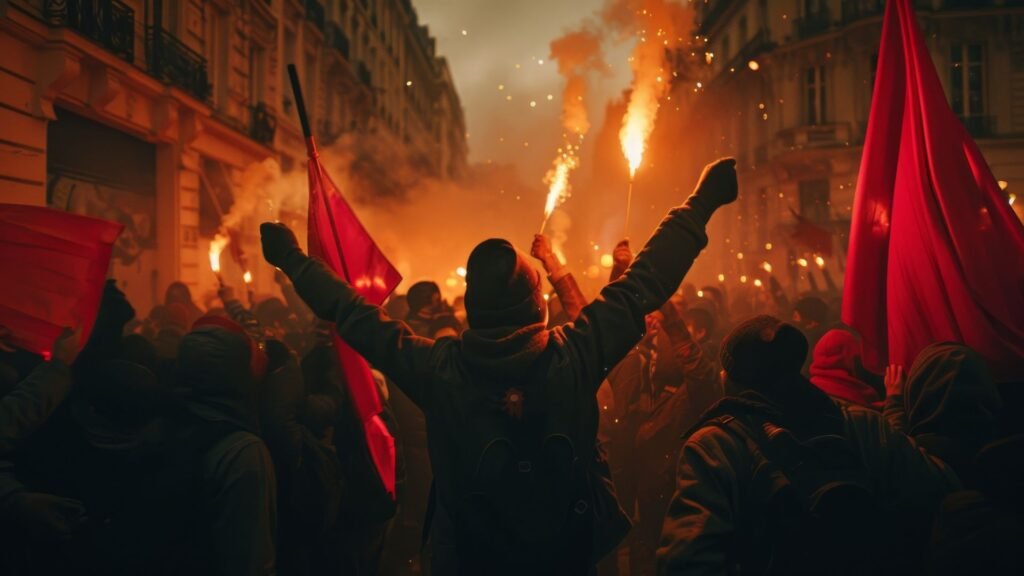Nepal Protest: Change is the only constant in politics. Thrones fall and new leaders rise. What happened to former Nepalese Prime Minister KP Sharma Oli is a textbook example of this timeless truth. The very strength that propelled him to power ultimately led to his exit.
Nepal’s democracy is young, and political stability even younger. The country has seen 17 governments come and go in the last 14 years. On average, a new prime minister every year. Oli himself served as PM four separate times, using political maneuvering and raw influence to grab power each time. But when public sentiment turned, even he couldn’t hold on.
Oli’s First Term: The India Skeptic
Oli’s political roots trace back to Nepal’s Communist Party (Marxist-Leninist). Known for fiery nationalist rhetoric from student politics days, he first became prime minister in October 2015 with the backing of Maoists and other allies.
What this really means is he used an aggressive anti-India stance to rally support and leaned heavily into China-Nepal relations. But this backfired with the outbreak of the Madhesi movement demanding regional rights. Rising India-Nepal tensions cost Oli his job in August 2016.
Second Term: Power and Controversy
Oli returned in February 2018 with a clear majority under the unified Communist Party of Nepal. He doubled down on nationalism, releasing a divisive new map claiming disputed border territories from India.
Let’s break it down: this move alienated Nepal’s biggest neighbor and escalated diplomatic strains just as internal party rivalries and court rulings piled up. Oli dissolved the parliament in late 2020 hoping to consolidate power but was forced out by May 2021.
Brief Third Term and the Fourth Return
A Supreme Court order briefly restored Oli in July 2021 for a few days before coalition politics pushed him out again. But politics is cyclical. In July 2024, backed by the Nepali Congress, Oli became PM yet again without a general election, a power grab more than a public mandate.
What this really meant was political instability was far from over. Nepali youth, fueled by grievances over corruption, unemployment, and censorship, including a sweeping ban on 26 social media platforms—organized widespread, often violent, protests.
Oli’s Final Exit: Public Pressure and Political Reality
Under intense pressure and public outcry, including the army chief’s advice to resign for restoring order, Oli stepped down in September 2025. His departure marks not an end but another episode in Nepal’s ongoing political turbulence.
Political analyst Brahma Chellaney sums it up: Even the most cunning and experienced players cannot withstand the power of united youth anger. Oli’s fall reflects not just his failings but the inherent fragility of Nepal’s system.
Diplomatic expert Sushant Sareen adds a layer: Playing the nationalist card to stir resentment, sidelining neighbors, and abusing power ultimately backfires when the population demands basic governance and justice.
What This Means for Nepal’s Political Future
The question now is whether Nepal can break its cycle of annual government changes and political gamesmanship. Oli’s career illustrates how personalized power struggles often overshadow democratic governance.
With the rise of youth and new political actors demanding transparency and accountability, the balance may finally tip. But as past experiences suggest, Nepal’s path to stability will likely be uneven.
The Man Behind the Leader
Born in 1952 to a humble farming family, Oli’s life story is one of hardship and political activism. He spent 14 years imprisoned during the Panchayat era, strengthening his resolve. Over decades, he climbed party ranks, from Jhapa district representative to home minister, deputy prime minister, and eventually prime minister.
His political journey reflects Nepal’s complex interplay of ideology, ethnicity, and geopolitics.
Nepal’s experience with KP Sharma Oli reminds us that political power is fleeting, and legitimacy comes from consistent public trust, not just coalition math or nationalist posturing. In a volatile democracy like Nepal’s, true stability will come only from leaders who listen as much as they lead.
Nepal’s next leader is still uncertain, but two key figures have emerged as potential successors to KP Sharma Oli after his resignation amid massive protests.
Who is likely to replace KP Sharma Oli?
First is Rabi Lamichhane, the founder of the Rastriya Swatantra Party (RSP). A former TV host turned politician and known for his anti-corruption stance, Lamichhane has strong support among young voters and urban middle classes. His party’s coordinated move of 21 MPs resigning signals a growing political realignment, positioning him as a major contender.
The second frontrunner is Balendra “Balen” Shah, the independent mayor of Kathmandu and a structural engineer-artist-turned-politician. Although not yet a formal prime ministerial candidate, Balen Shah’s popularity is rising rapidly, especially among the youth and Gen-Z protestors, due to his independent status and outspoken support for the protests. He has urged demonstrators to remain non-partisan, making him a unifying figure for voters disillusioned with established parties.
These two reflect a broader desire among the Nepali electorate for fresh leadership beyond the long-standing power struggle among traditional parties like Nepali Congress, CPN-UML, and the Maoists.
In short, while no official successor has been named, the political landscape points toward Lamichhane and Balen Shah as the leading contenders to succeed KP Sharma Oli amid Nepal’s volatile political environment. Their chances hinge on legal developments and how effectively they can capitalize on the widespread demand for change.
Read More: Opinion | Why Trump’s “Foreign Policy” Is More Instinct Than Strategy




